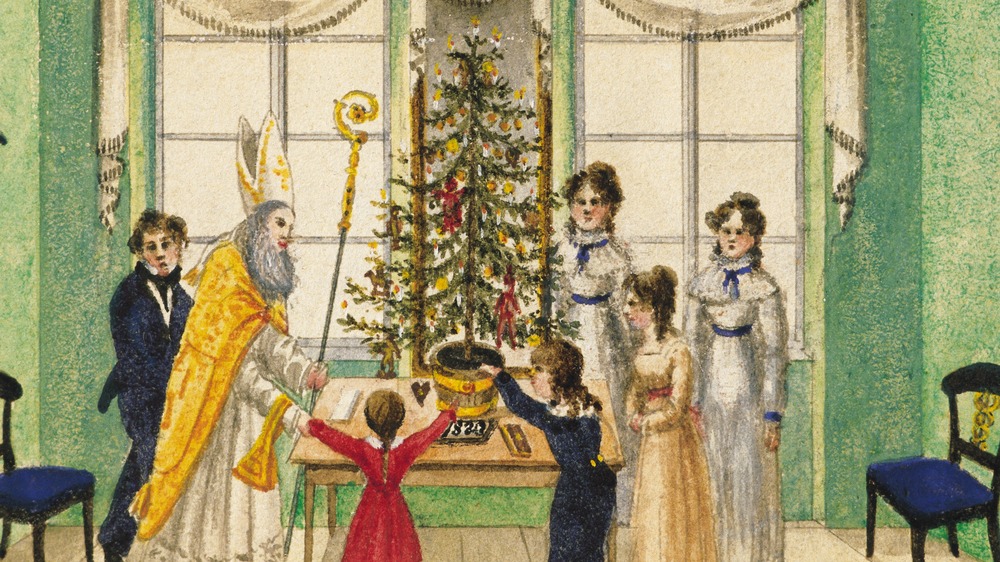Why People Hang Stockings At Christmas
It is that time of year again, when people begin going into their attic or rummaging around in some other storage space, digging out the boxes of Christmas decorations that were tucked away for safekeeping back in January. The beginning of the holiday season means that many people will be stringing lights, putting up nativity scenes, setting up Christmas trees, and, of course, hanging stockings.
Hanging big, festively decorated stockings by the fireplace, with the hope that Santa Claus will fill them with treats, is a popular Christmas tradition. In 1823, the practice was commemorated in song with the publication of the famous poem "A Visit from St. Nicholas," better known today as "The Night Before Christmas" (found on the Poets website) which included the line: "The stockings were hung by the chimney with care / in hopes that St. Nicholas soon would be there," according to Point Park University. But the tradition of hanging stockings goes back far earlier than the 1800s. It has been around as long as the tradition of Santa Claus himself.
The legend of Santa Claus was inspired by St. Nicholas of Myra
According to the most versions of the legend, the tradition dates all the way back to the fourth century and the life of St. Nicholas of Myra, the man whose generous acts inspired the legendary character of Santa Claus. St. Nicholas was a real person, living in Asia Minor — what's now the country of Turkey — in the 300s.
St. Nicholas was a Christian bishop, and he was dedicated to emulating the life of Jesus Christ, especially his generosity to the poor. St. Nicholas would often give gifts to the less fortunate, sometimes under cover of night, in order to keep his identity a secret so no one would know who was behind the gift, according to The Vintage News.
One day sometime in the fourth century, St. Nick heard an old man discussing his money troubles. The man was a widowed father, and he worried he did not have enough money to pay the dowries for each of his three daughters. This meant they would be unable to marry, which would have caused unimaginable embarrassment, as well as hardship.
People hang stockings to emulate St. Nick's generosity
Upon hearing this, the saintly bishop wanted to help, but knew the man was too proud to accept outright charity. So one night, after the family had gone to bed, Nicholas snuck into their house through the chimney, and left bags of gold coins inside the three girls' stockings, which had been laundered and were hanging to dry over the fireplace mantle. The father would now have enough to fund dowries to pay suitors, and the girls were saved from lives of spinsterhood.
In some versions of the story, St. Nick left three golden balls in the stockings instead of coins. This gave rise to the tradition of finding oranges, which are meant to resemble those golden gifts, inside stockings on Christmas morning, according to Smithsonian Magazine.
In any case, as the story spread, families started sneaking gifts into the stockings of their loved ones, just as St. Nick did. People began opening up their sock drawers and pulling out their biggest socks to hang up around the fire at Christmastime, in anticipation of the gifts. Originally, the gift-giving ritual took place on the Feast of St. Nicholas, on December 6, but eventually, the practice moved to Christmas Eve. People began decorating with personalized, festively designed stockings meant exclusively for Christmas goodies, and thus the tradition of the Christmas stocking was born.


